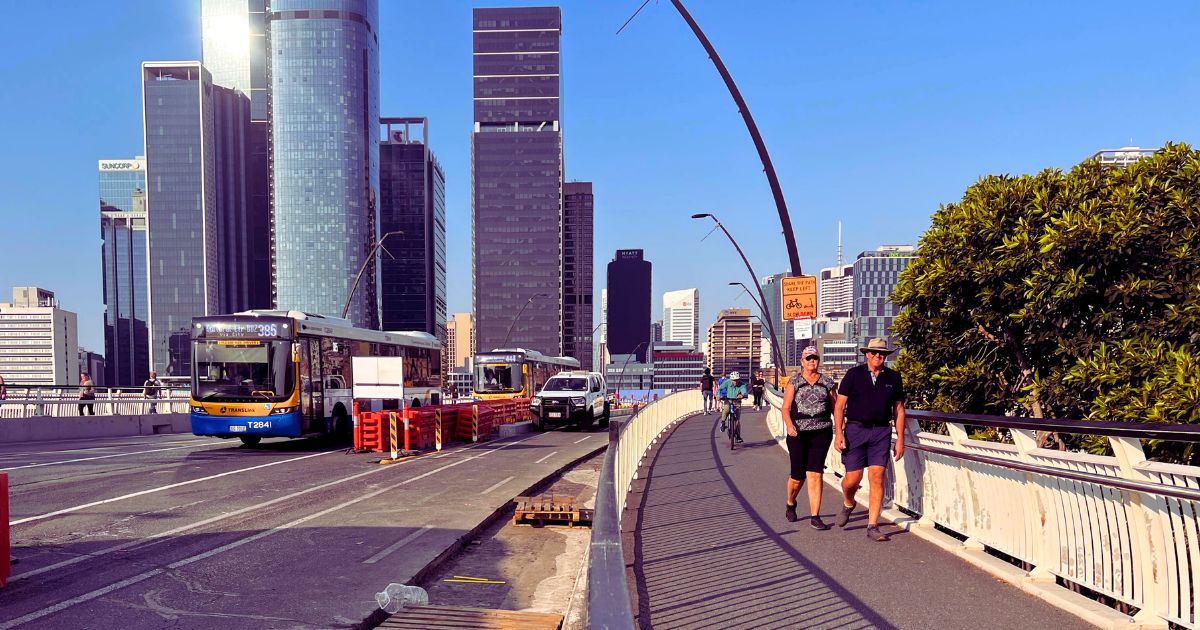The decision by Council to scrap shading on Brisbane’s Victoria bridge is short-sighted, and puts community members at risk on hot days. My organisation, Sweltering Cities, works with communities impacted by extreme heat across Australia. We’ve had thousands of conversations with people living in hot homes, and hot suburbs. We know that cooling our suburbs and streets can look different in each city, but there are some things that don’t change: shade is cool and makes our cities safer.
Heatwaves are the deadliest environmental disaster in Australia. They kill more people than all other disasters combined, and we know that’s going to increase. There are Federal Government predictions that by 2050 over 1000 people will die in Brisbane each year due to extreme heat.
Deciding to cancel any shade or greening project is just passing on the costs to the community and our health system. We know that hospital visits and ambulance call-outs all go up as temperatures rise. There are physical and mental health impacts that put pressure on our health system, our workplaces and our families.
You might think that a short walk across a bridge can’t be that bad. However, on hot days or during heatwaves our bodies are stressed by long days and nights trying to cool down. If you’ve been sweating all night, or have been in the heat all day, being exposed to the burning summer sun without relief can be dangerous. Any of us can be at risk of dehydration, heat exhaustion or even heat stroke.
And for some of us, it’s even more dangerous. Older people, people with disabilities or chronic illnesses, people who are pregnant, little kids and others are all at a higher risk on hot days. Cities need to be accessible to everyone. None of us want family or friends to struggle in the heat, or feel trapped in their homes on hot days.
In our 2022 Summer Survey reached over 200 people in Queensland and over 75 per cent of them told us that they avoid walking on hot days. When our outdoor spaces aren’t fit for purpose in summer, it also leads to isolation and avoiding our normal activities and exercise.
By 2030, the Queensland Government has predicted that Brisbane’s climate is going to be closer to what Bundaberg’s was in 2019. We can expect longer, more extreme heatwaves and hotter summers. It’s absolutely essential to be building infrastructure for the climate of the future, not one that no longer exists.

“I urge the Brisbane City Council to reconsider scrapping the shade and greening projects. If these shade sails and other infrastructure need to be retrofitted in the future, it will be more expensive and more difficult. Let’s build the accessible, walkable, and sustainable cities of our future now. Brisbane can lead the way,” Emma Bacon.
RELATED STORY
Cover image by Anna Campbell


